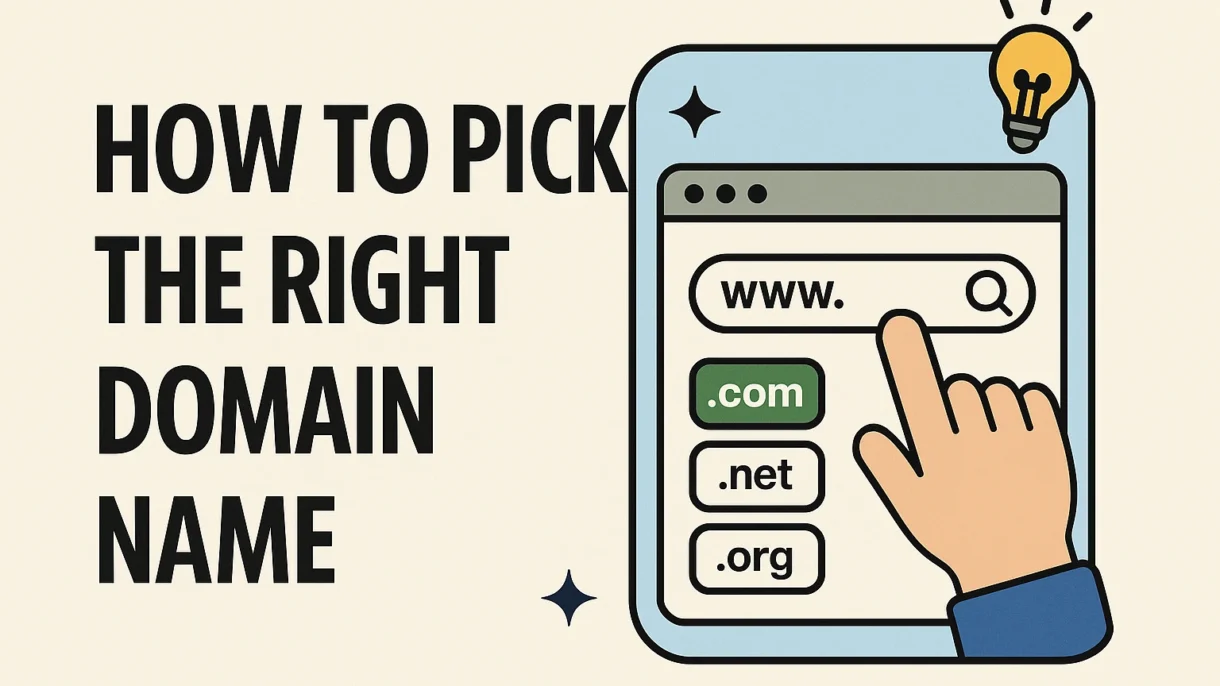Choosing the right domain name is one of the most important steps when creating a website. It’s more than just a web address—it’s your online identity. A strong domain name can help with branding, SEO, and user trust. In contrast, a poor choice can confuse visitors, hurt credibility, and even reduce traffic.
Here’s a comprehensive guide to help you pick the perfect domain name for your website.
1. Keep It Short and Simple
Shorter domain names are easier to remember, type, and share. Avoid long or complicated words that might be misspelled or mispronounced. Ideally, stick to:
- One or two words
- Under 15 characters
- Simple, clear spelling
Example:
✅ good: freshfoods.com
❌ bad: thefreshorganiclocalfarmersmarket.com
2. Make It Brandable
Your domain name should reflect your brand. A good name evokes a feeling, fits your niche, and is easy to recognize. Avoid generic terms or hyphenated names.
Tips for brandability:
- Invent new words (
Spotify,Zynga) - Combine meaningful words (
Facebook,YouTube) - Avoid numbers or dashes
3. Choose the Right Domain Extension
While .com is still the gold standard, there are many domain extensions to choose from. Depending on your industry or location, alternatives might be better suited:
.com: Most popular and widely recognized.net: Common for tech startups.org: Great for nonprofits.io: Popular with tech and SaaS companies- Country codes like
.uk,.de,.cafor local businesses
If you can, secure the .com version even if you use a different extension.
4. Avoid Copyright or Trademark Issues
Make sure your domain name doesn’t infringe on existing trademarks. This can lead to legal trouble and the loss of your domain.
Check for:
- Existing business names or products
- Trademarked words or phrases
- Similar-sounding competitors
Use tools like the USPTO Trademark Search or WIPO Global Brand Database.
5. Make It Easy to Type and Speak
If someone hears your domain name in a podcast or conversation, they should be able to spell it without asking.
Avoid:
- Unusual spellings
- Double letters (e.g.
pressstore.com) - Slang or abbreviations that can be confusing
Do the “radio test”: Say your domain name out loud. Can someone write it down correctly without you spelling it?
6. Use Keywords Strategically
If possible, include a keyword related to your business or niche. This can help with SEO and make it immediately clear what your site is about.
Example:
DenverPlumbingPros.com(great for local SEO)HealthyMealKits.com
But don’t overdo it—avoid keyword stuffing like BestCheapWebHostingService.com.
7. Check Domain Availability and Social Media Handles
Once you have a few domain name ideas, check:
- Is the domain available to register?
- Are social media handles (Twitter, Instagram, etc.) available with the same name?
- Does the name make sense globally, or does it have negative meanings in other languages?
Tools like Namechk or KnowEm can help you check availability across platforms.
8. Think Long-Term
Your domain name should grow with your business. Avoid being too narrow or trend-based.
For example:
iPhoneCaseStore.comlimits your ability to expand into other tech productsSmartTechGear.comgives you more flexibility
Choose a name you’ll be happy to use 5–10 years down the line.
Final Thoughts
Your domain name is a long-term investment in your brand. It should be clear, memorable, and aligned with your business goals. Take the time to brainstorm, research, and test ideas before making a final choice.
The right domain name can make all the difference in helping people find, trust, and remember your site.

